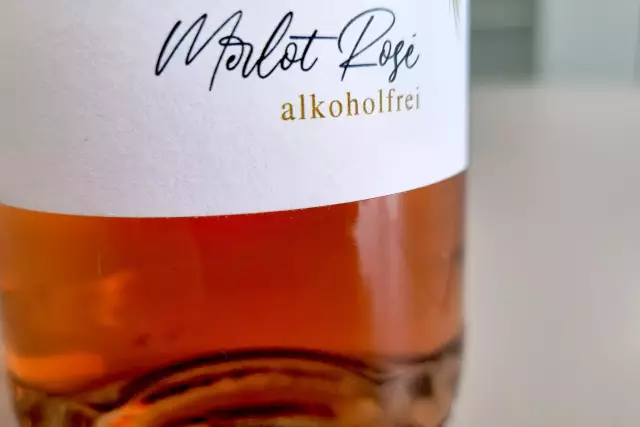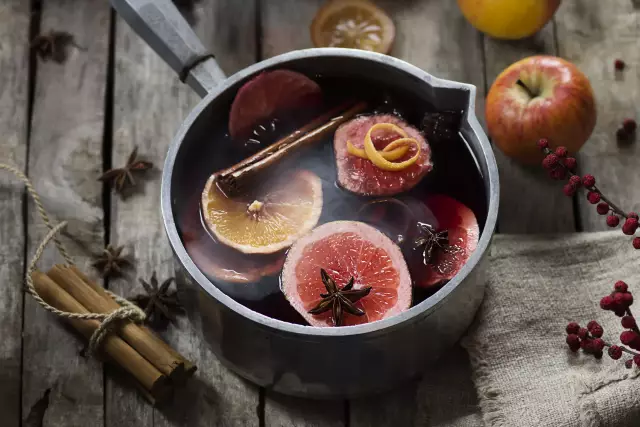Rosé
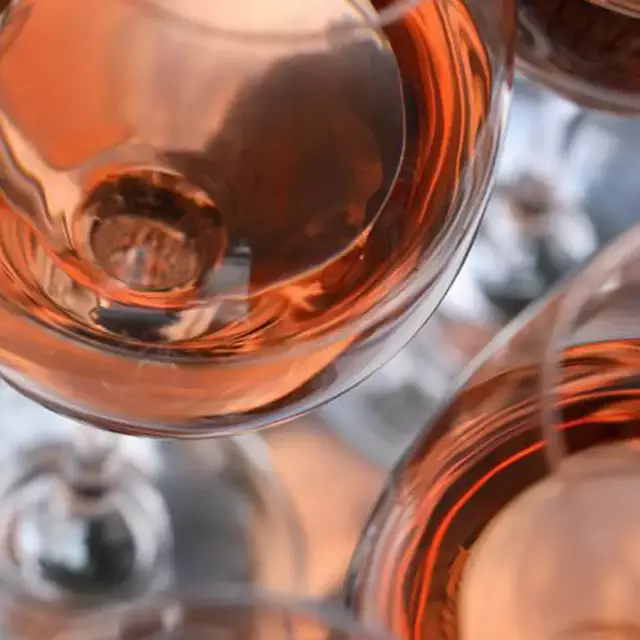
Over the last few years, the quality as well as the popularity of Rosé wine and Sekt has increased immensely. In 2020, Wines of Germany takes up this trend and showcase Rosé Wines.
Facts
-
12 %
is the share of rosé in the wines sold in Germany
-
9 - 13 °
are ideal drinking temperatures
-
2020
presented the DWI excellent rosé wines at ProWein
How is Rosé wine made?
In order to create Rosé, the red grapes are only lightly pressed initially. The so-called mash resulting from this light pressing is then left to rest for a while, to give the pigments in the grape skin time to colour the juice. Once the grape juice has taken on the desired shade of pink, the mash is pressed fully and the rosé-coloured juice is fermented into wine.
But not every rosé-coloured wine is called “Rosé”. Sometimes, you’ll find the term “Weißherbst” on the label. Since Weißherbst, as opposed to rosé, is always a single variety wine, the grape variety used in its production also has to be mentioned on the label. However, the term Rosé is more recognized internationally.
Varieties
Another rosé-coloured wine you might come across is Rotling. This is a special variety of rosé wine, produced by the joint pressing and fermentation of red and white wine grapes.
The so-called “Schillerwein” is a traditional Rotling from the wine-growing region Württemberg. No particular grape varieties are stipulated to produce Schillerwein.
Rosé wines are suitable companions at any time of the year. As a rule, they are served at a drinking temperature of 9-13 degrees centigrade, but during the warm summer months you might choose to cool them down even further, since they will warm up faster in higher ambient temperatures.
Enjoyment
Rosé and Weißherbst wines and their sparkling varieties make for a delightful aperitif or a companion for starters such as tapas and antipasti. We also recommend them with selected fish and barbecue dishes. Since they are naturally low in fruit acids and tannins, many wine lovers also enjoy having them with Asian specialities such as curries or Thai food. Also try mild, semi-hard cheeses such as Edam or young Gouda with delicately fresh and dry rosé-coloured wines: perfect harmony.
And, naturally, Rosé and Weißherbst wines are great partners for a fresh and fruity summer punch. Have a Pinot Noir Rosé together with strawberries and marvel at a combination that will not just tickle your taste buds but also please your sense of colour.
Which grape varieties make up "Badisch Rotgold" - a type of Rotling?
By definition: A "Badisch Rotgold" is composed of Pinot Gris and Pinot Noir and as the name suggests it comes from the Baden growing region.
Varietals

Asparagus again at last Rocket salad with green asparagus and turkey breast fillet
A light, young Rivaner goes well with green asparagus.
- 400g Grüner Spargel
- 100g Rucola
- 400g Putenbrustfilets
- 200g Kirschtomaten
- 4 Eier
- 1 EL Basilikum-Pesto
- 1TL Butter
- 2 EL Olivenöl
- 2 EL Weißwein-Essig
- etwas Salz, Pfeffer
Peel the lower third of the asparagus and cut off the ends. Cut the spears in half and cook in boiling salted water with 1 tsp butter for approx. 7 mins. Set the asparagus water aside.
Cook the eggs until almost firm (the yolk should still be a little soft), peel and cut into quarters. Cut the turkey breast fillet into strips.
Fry the pine nuts briefly without fat in a non-stick pan. Then add a little fat directly to the pan and fry the turkey breast strips. Then keep them warm.
Mix the pesto with the white wine vinegar, 5 tbsp of the asparagus water, the olive oil and salt and pepper in a salad bowl to make a dressing.
Wash the rocket and add to the dressing. Halve the cherry tomatoes and add to the bowl. Mix in the asparagus and turkey. Finally, garnish with the quartered eggs and pine nuts.</p
<p>This goes well with freshly baked ciabatta bread.
Wine recommendation:
A light Rivaner from the last harvest, fresh as spring, with delicate flavours.
- Müller-Thurgau (brut)
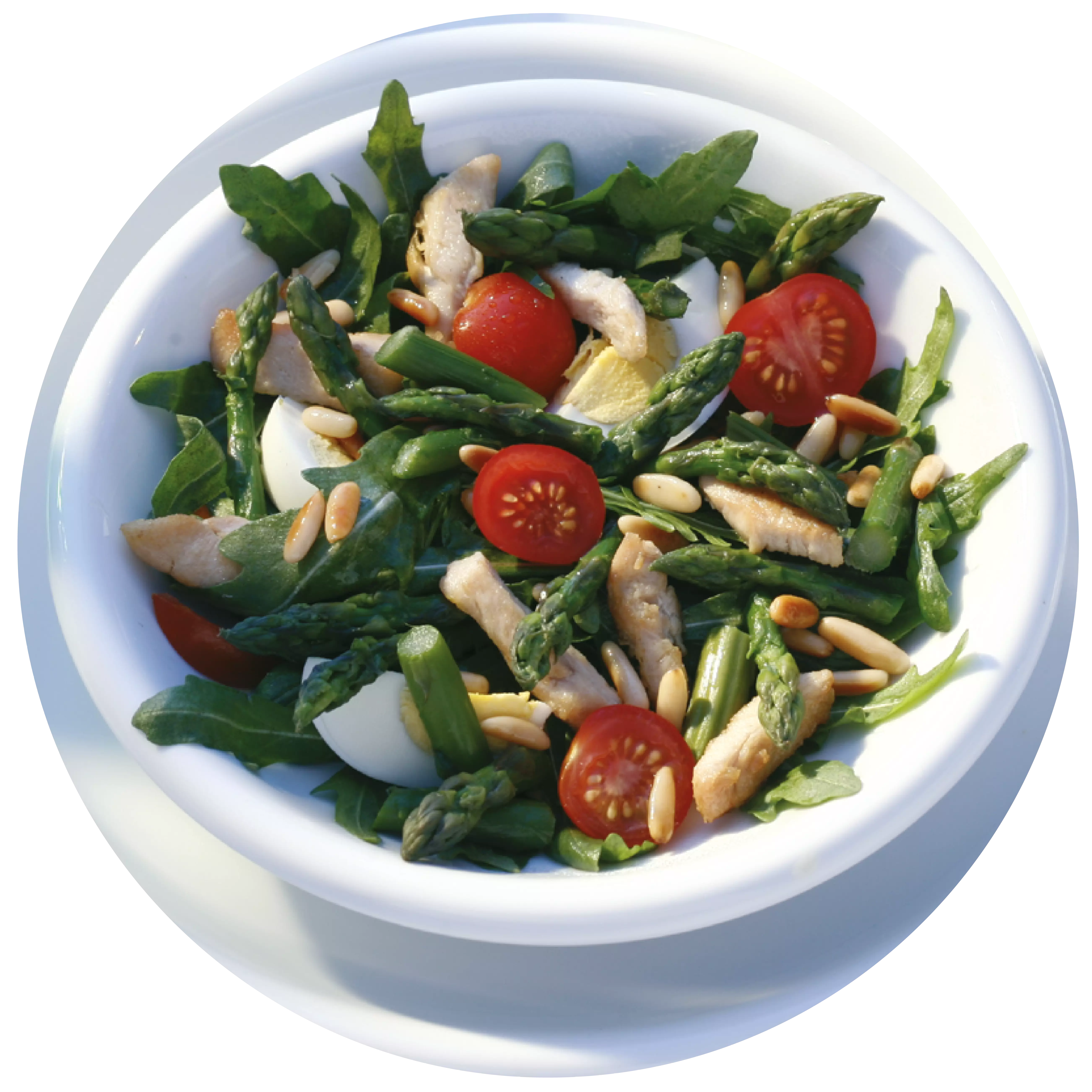
with dry sparkling wine Sparkling wine and lime dessert
with dry sparkling wine
- 300ml Winzersekt
- 4 Limetten
- 100g Zucker
- 30g Speisestärke
- 100g Butterkekse
- 50g ungesalzene Butter
- 2 Eiweiße
- 50g grieschicher Joghurt
- 150g Schlagsahne
Pour the sparkling wine and sugar into a pan. Chill the remaining sparkling wine. Wash 1 lime with hot water and finely grate the zest. Halve the lime and 2 others, squeeze out the juice and mix with the cornflour. Pour everything into the pan and bring to the boil briefly. Remove the pan from the heat and chill the cream in the fridge.
Fill the shortbread biscuits into a freezer bag, crush with a rolling pin and place in a bowl. Melt the butter in a pan, pour over the crumbled shortbread biscuits, add a pinch of salt and mix well. Leave to cool briefly, divide half into large wine glasses and press down firmly.
Cut the lime into slices. Beat the egg whites with salt until stiff. Stir the yoghurt into the chilled champagne and lime cream. Whip the cream until stiff and fold into the cooled cream, one after the other, together with the beaten egg whites. Spread half over wine glasses, add another layer of shortbread biscuits and finish with a layer of cream. Garnish with lime slices and pour in the remaining sparkling wine. Toast and enjoy!
- Riesling (trocken)
- Pinot Blanc (trocken)
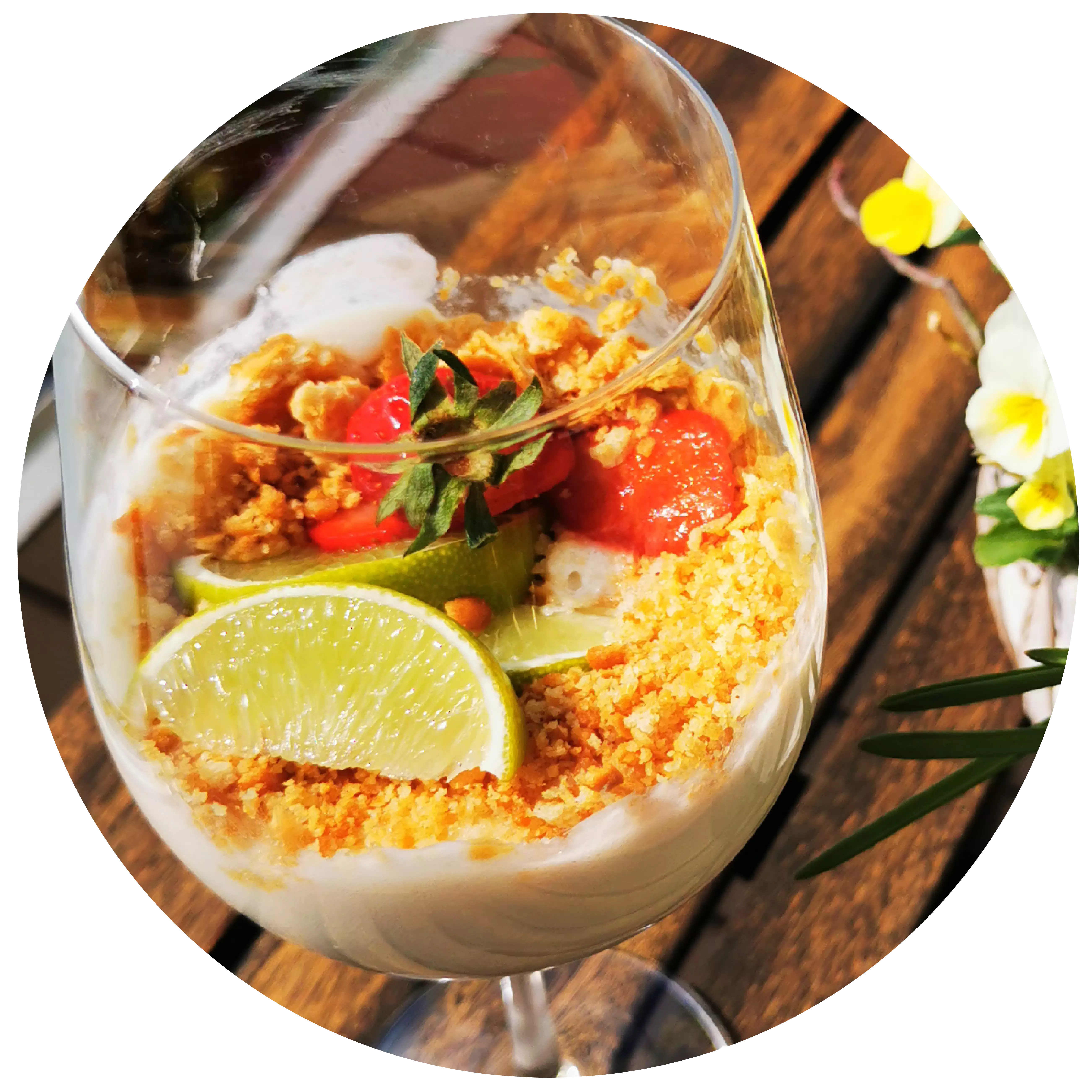
with pear wedges Chicken breast strips
with pear wedges
- 500 Gramm Hähnchenbrustfilet
- 2 reife Birnen
- 200 ml Birnensaft
- 100 ml Sahne
- 1 ganze Zwiebel
- 4 EL Olivenöl
- nach Belieben Salz & Pfeffer
Cut the chicken breast fillet into strips. Peel the onion and cut into cubes. Heat the olive oil in a pan and fry the meat in it. Add the diced onion and season with salt and freshly ground pepper.
Wash and peel the pears, remove the skin, cut into wedges and sauté in the pan. Deglaze with the pear juice and allow to reduce slightly.
<p
<p>Finally, add the cream and season to taste.
- Müller-Thurgau (halbtrocken & feinherb)
- Kerner (halbtrocken & feinherb)
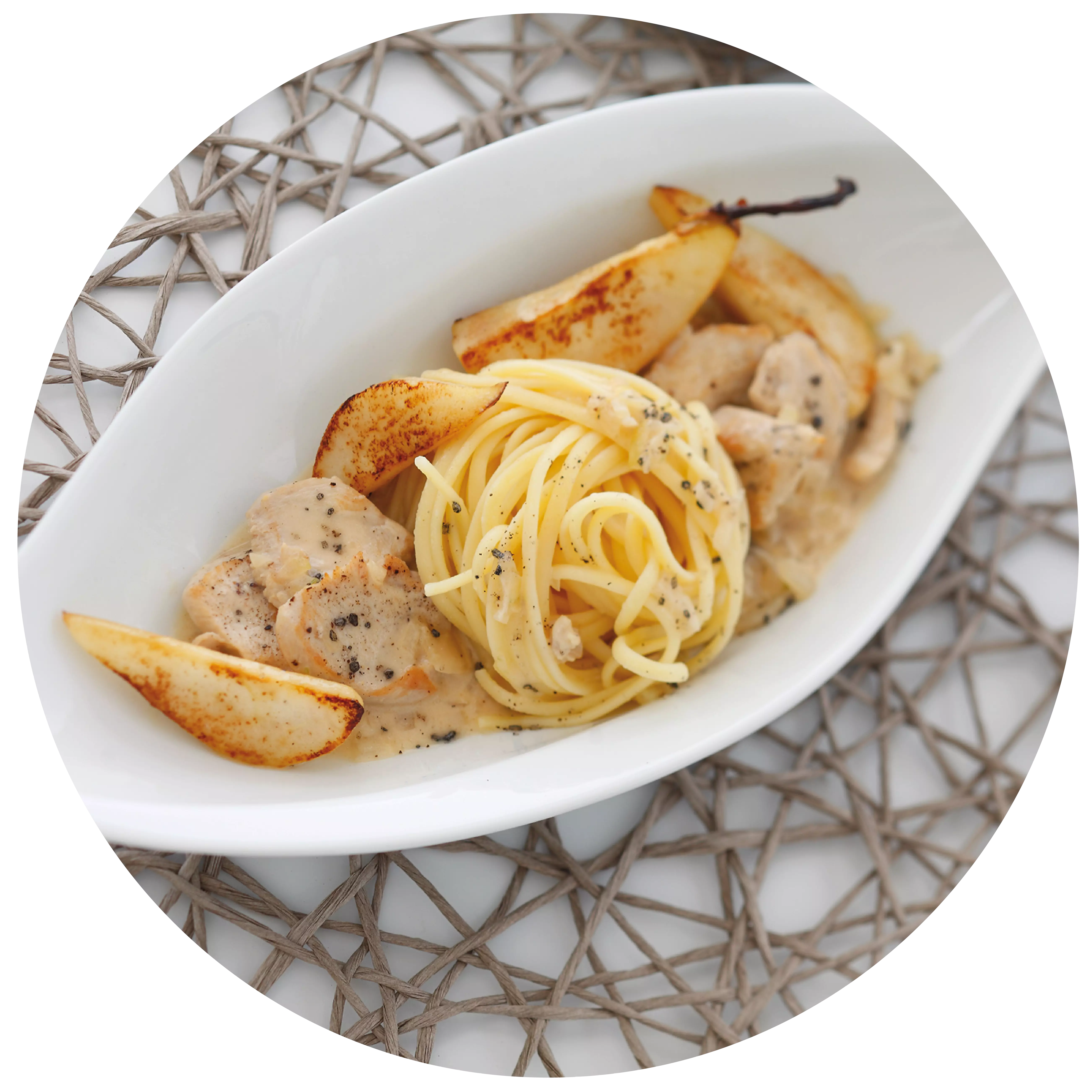
with goat's cheese Courgette and chanterelle salad
with goat's cheese
- 2 ganze Zucchini
- 3 EL Rapsöl
- 1 kleine Schalotte
- 300 Gramm Pfifferlinge
- 1 Msp. gemahlener Piment
- 2 Bund Rucola
- je 1/2 Bund Kerbel u. glatte Petersilie
- je 3 EL Walnuss- u. Rapsöl
- 4 Stück Ziegenkäse-Taler
- 1 Prise Zucker
- nach Belieben Salz & Pfeffer
Salad:
Wash the courgettes and slice thinly. Place in a bowl and mix with the oil.
Heat a grill pan and fry the courgettes in batches until golden brown. Season with salt and pepper, place in a bowl.
<p
<p>Peel and finely dice the shallot. Clean the chanterelles, wash if necessary and pat dry. Depending on size, cut in half if necessary.
<p
<p>Sauté the shallot in a pan until translucent. Add the chanterelles and fry vigorously for 3 minutes while stirring. Season with salt, pepper and allspice. Add to the courgettes. Wash the rocket and spin dry.
Dressing:
Wash the herbs, shake dry. Pluck the leaves, blend finely with both types of oil and vinegar in a blender or with a hand blender. Flavour with salt, pepper and sugar. Pour over the courgette and chanterelle mix and mix loosely with the rocket. Arrange on plates, sprinkle with goat's cheese.
- Pinot Blanc (trocken)
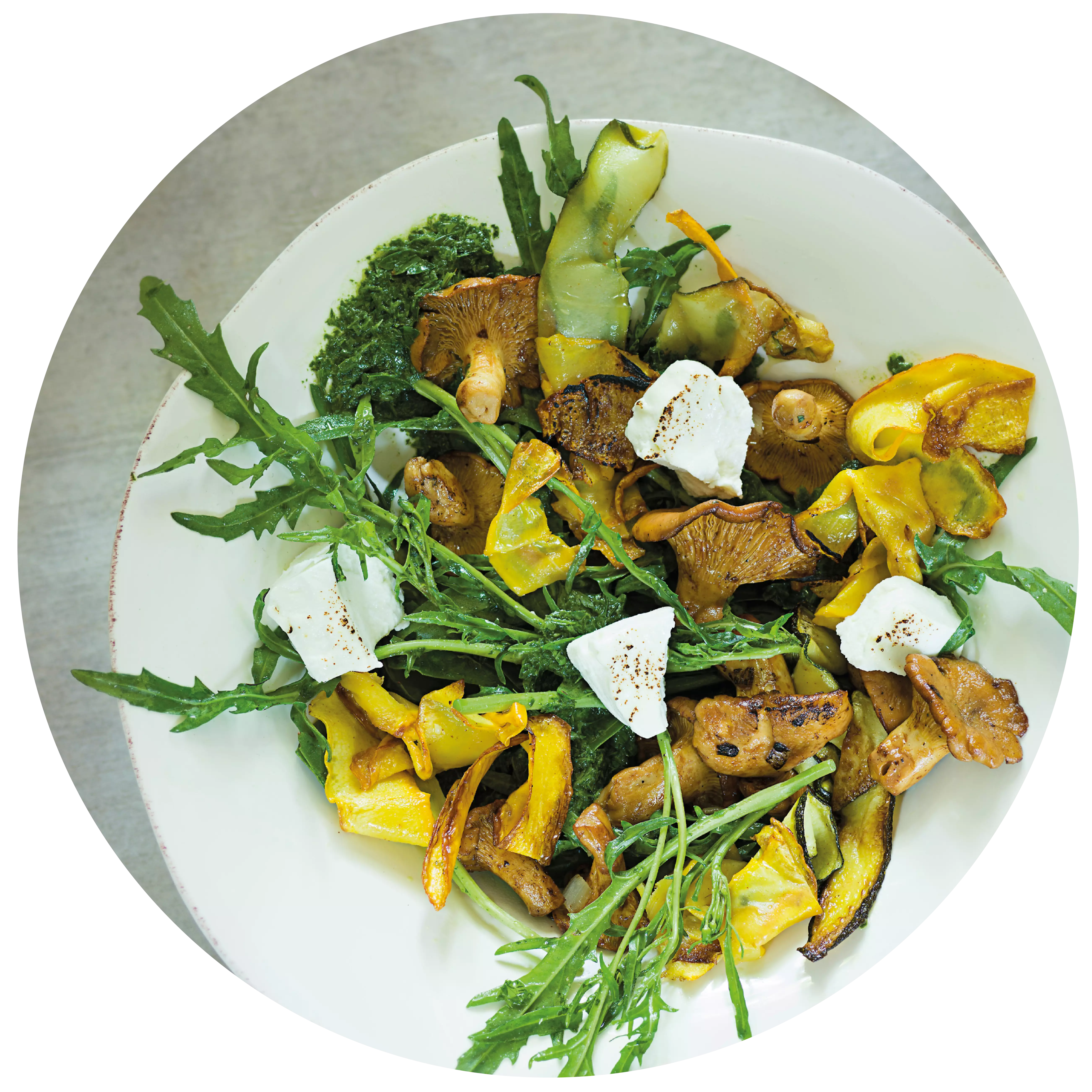
Teaser
Events
-
Show
winetasting in our winery - blind tasting
Mainz-Hechtsheim



